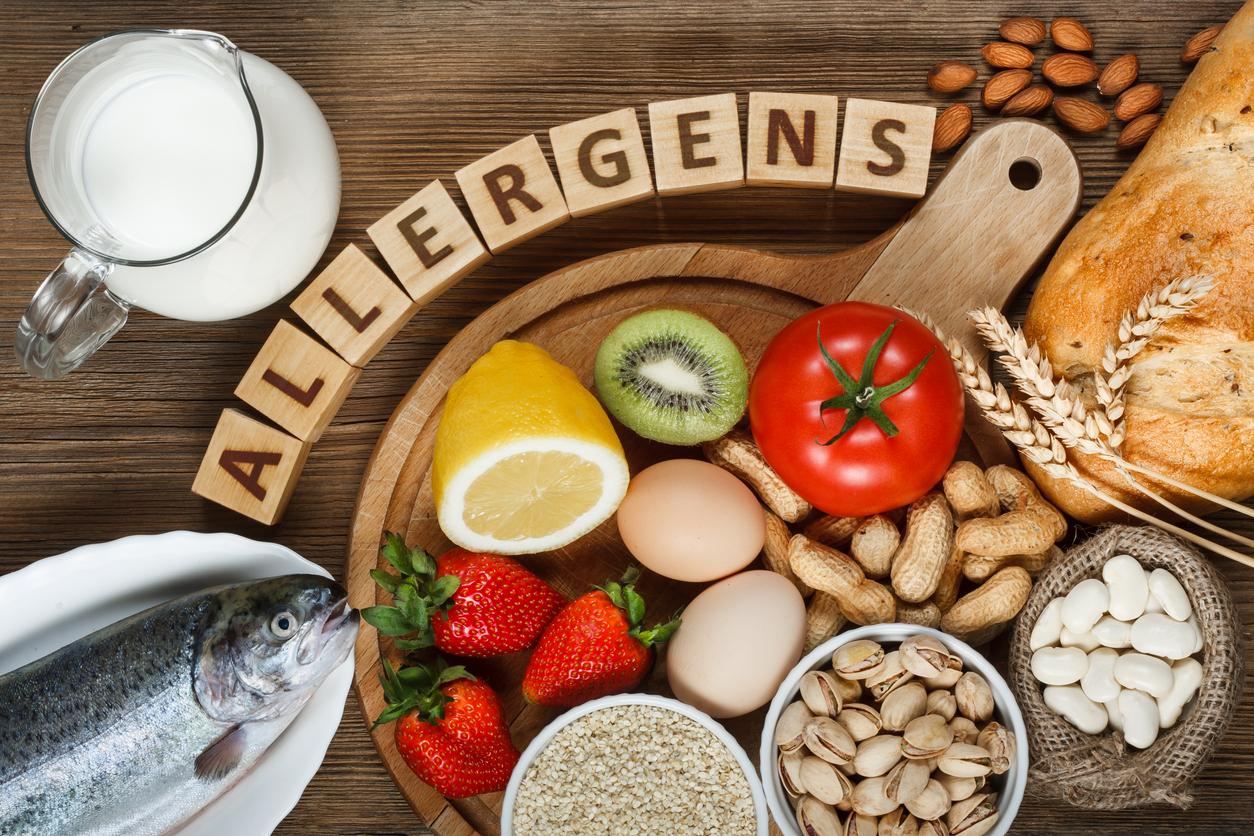During a symposium, the French Federation of Allergology unveiled a list of emerging allergens linked to our new lifestyles.

- The main emerging allergens are “goat’s milk, sheep’s milk, buckwheat, sesame, legumes such as peas and lentils, kiwi and bee products”.
- The consumption of insects can be responsible for cross allergies.
- 15 to 20% of the population is allergic to anti-inflammatories and antibiotics.
In France, nearly one in three people suffer from allergies. “Its prevalence is steadily increasing. (…) By 2050, 50% of the world’s population could be,” warns Professor Frédéric de Blay, pulmonologist and head of the thoracic pathologies center at the Strasbourg University Hospital and president of the French Federation of Allergology. Over the past thirty years, the dysregulation of the immune system, which constitutes allergy, has been favored by indoor and outdoor air pollution, the loss of biodiversity, climate change and new eating habits.
What are the main emerging food allergens?
The French Federation of Allergology reports that food allergies are experiencing unprecedented growth, with a prevalence that has doubled over the past 10 years and affects 3.5% of adults and 8% of children. This increase is accompanied by an increase in the appearance of serious allergic manifestations that can be life-threatening. “For example, the number of anaphylactic shocks in the emergency room has increased fourfold in just 20 years.”
During the colloquium “Tomorrow, all allergic? Acting to prevent” organized on March 9, Dr Guillaume Pouessel, pediatrician-allergist, revealed the main emerging food allergens. “Goat’s milk, sheep’s milk, buckwheat, sesame, legumes like peas and lentils, kiwi and bee products cause the most problems.” He recalls that food allergies, caused by milk, eggs, exotic fruits and nuts, affect 6% of children under 5 and a half years old.
Consumption of insects, new containers: sources of concern for allergy sufferers
“For a few years, we have been reducing our consumption of animal proteins and turning to new products, such as legumes, which are new threats and can cause severe reactions”, says Pascale Couratier, director of the French Association for the Prevention of Allergies (AFPRAL). She also mentions the use of insect meal or the consumption of insects, which can be the cause of cross-allergy. “They contain proteins common to those found in crustaceans, mites and molluscs.”
Another “surprising” source of allergies: new containers. “Algae-based food films and wheat straws are made from plant products such as legumes. If they are heated, do allergens migrate into the food? This is worrying. For the moment, we do not don’t know if there’s a health risk, because it’s brand new,” explains Pascale Couratier before adding that the plants in her house or in her garden can also lead to new allergies. “You have to diversify them.”
“Drug allergies increase the risk of complications”
Among the new allergic threats, there are also drugs. “At the moment, we don’t really know how many people are sensitive to it,” says Dr. Sébastien Lefevre, president of the National Professional Council of Allergology (CNPA). According to him, 15 to 20% of the population are allergic to anti-inflammatories and antibiotics. “Individually, drug allergies increase the risk of complications and side effects are greater. Collectively, it increases resistance to treatment.” To find out if you are allergic to drugs, he advises to consult an allergist.


















